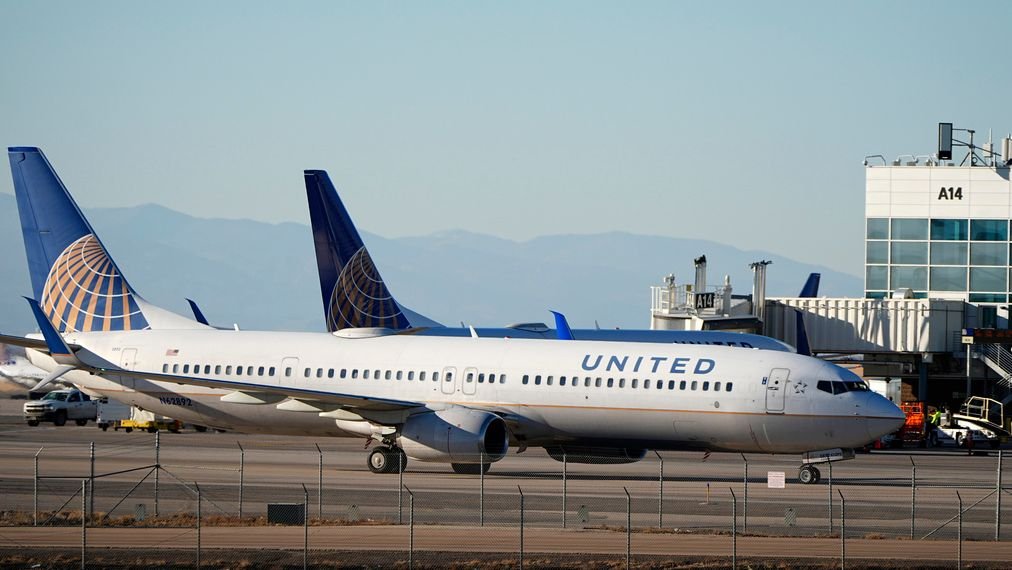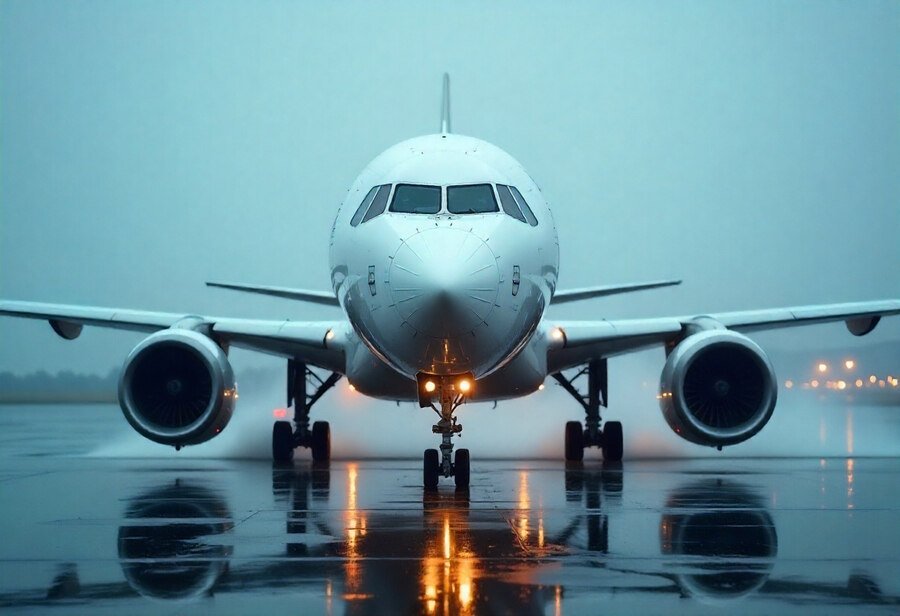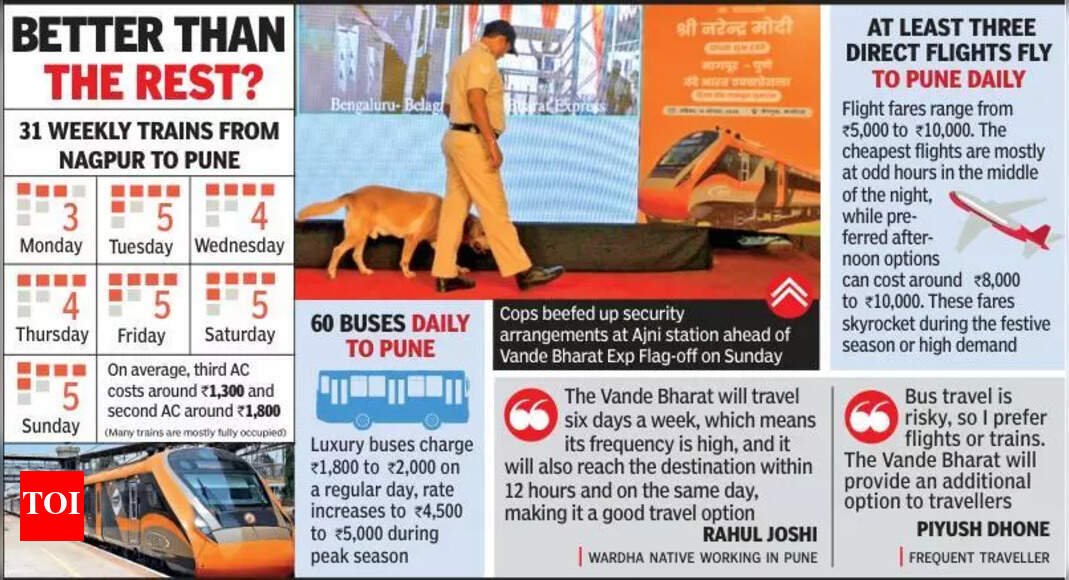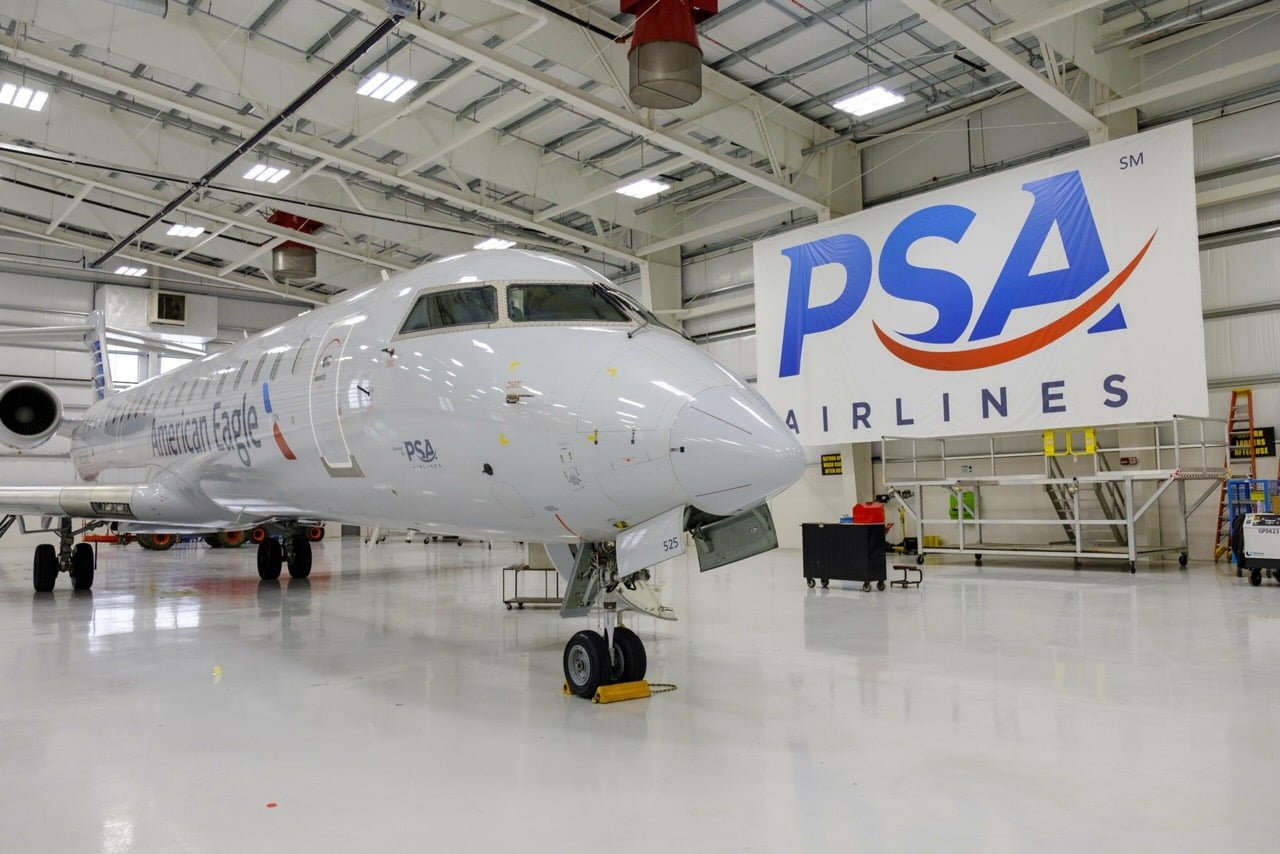Flight Buzz
United Airlines flights grounded nationwide

United Airlines flights on major routes were grounded Wednesday because of a technology issue, and additional flight delays were expected into the evening, the airline said.
An alert on the Federal Aviation Administration website said all United flights destined for Chicago were halted at their departing airports. The agency said Denver, Newark, Houston and San Francisco airports were also impacted by halted flights.
“Safety is our top priority, and we’ll work with our customers to get them to their destinations,” an emailed statement from the Chicago based-airline said without disclosing the specifics of the problem.
An AP journalist had boarded a United plane at the Louis Armstrong New Orleans International Airport for a trip to Houston when flight attendants announced a “systemwide” problem had grounded flights. They then sent passengers back to the terminal.
Another traveler, Johan Kotze, was at the New Orleans airport to begin a journey to the Indian Ocean island nation of Mauritius for vacation. Getting caught up in flight delays for him likely meant he would miss connecting flights along the way and would have to rebook not only the flights but a car and accommodations as well.
“It’s not very nice,” he said of the experience.
United Airlines apologized on social media to upset customers who were facing delays and hours sitting in planes on runways.
“Hey there, we apologize for the travel disruption today,” the airline told a customer on the social platform X. “Our teams are working to resolve the outage as quickly as possible. Thank you for your patience.”
Flight Buzz
US Airlines Expand Their European Networks in August 2025, Adding New Routes and More Frequent Services to Meet the Record-Breaking Demand for Transatlantic Flights

Published on
August 10, 2025 |
US airlines are expanding their European networks to meet the record-breaking demand for transatlantic flights. With 620 daily flights scheduled between the US and Europe, carriers are responding by adding new routes and increasing flight frequencies to accommodate the growing number of travelers. This expansion reflects the aviation sector’s rapid recovery and the surge in international travel as passengers seek more options to connect with key European destinations.
Top Airlines Expanding in August 2025
Airline growth is commonly measured by either absolute increases or percentage growth. Smaller carriers tend to show higher percentage growth with even modest increases in their operations, while larger airlines usually experience a more significant absolute rise. By focusing on percentage growth, Finnair and Neos lead the pack, each expanding their US services by 41% compared to the previous year.
Finnair’s expansion has been fueled by increased service to major US cities such as Chicago O’Hare, Dallas/Fort Worth, and Los Angeles. Neos, the Italian leisure airline, has also grown substantially, largely due to its new Bari-New York JFK route.
Edelweiss, a Swiss airline, ranks third with a 34% rise in US services, driven by the introduction of the Zurich-Seattle route. IberoJet follows in fourth place with a 25% increase, thanks to additional flights on its Madrid-Orlando route. KLM completes the top five, with a 17% increase in departures, bolstered by the launch of Amsterdam-San Diego flights and more frequent services to Las Vegas.
Airlines Scaling Back Their US Services
While many airlines are expanding, a few have chosen to reduce their US operations. Icelandic carrier PLAY has cut its US flights by 45%, phasing out all of its US routes. This includes the cessation of its Keflavik-Washington Dulles service in December 2024 and the discontinuation of its Boston and Stewart routes by September 2025. The airline has also ceased operations to Canada earlier this year.
Singapore Airlines has reduced its US services by 42%, following the cancellation of its Singapore-Manchester-Houston route, which had been the longest one-stop flight globally. Other airlines that have reduced their US presence include TUI, which has cut back by 32%, Azores Airlines, with a 30% decrease, and Condor, reducing services by 17%. Condor has eliminated several US routes, including those from Frankfurt to Baltimore, Minneapolis, Phoenix, and San Antonio.
Major US Airlines Expand Their European Networks
The leading US carriers have continued to expand their European operations in August 2025. Despite their already large market share, these airlines will account for nearly half of the new flights introduced this year. However, their growth appears more modest in percentage terms, given their extensive networks.
One of the major US airlines has increased its European services by 7%, offering 57 routes in total. New destinations for August include Charlotte to Athens, Chicago O’Hare to Madrid and Naples, Dallas/Fort Worth to Venice, Miami to Rome, and Philadelphia to Edinburgh. However, some routes, such as Chicago O’Hare to Venice, have been discontinued compared to last year.
Another major airline, which operates 81 routes, has expanded its network by adding destinations such as Denver to Rome, Newark to Bilbao, Faro, Funchal, and Palermo, as well as Washington Dulles to Nice and Venice. These new services further strengthen the airline’s position in the transatlantic market.
A third major US carrier, operating 77 routes, has also made notable additions, including new services from Atlanta to Brussels and Naples, Boston to Barcelona and Milan, and Detroit to Dublin. Other new routes include Minneapolis to Copenhagen and Tampa to Amsterdam. However, some routes have been discontinued, including Atlanta to Stuttgart and Portland to Amsterdam, with the latter now served by another airline.
In August 2025, US airlines are expanding their European networks by adding new routes and increasing service frequencies to meet the record-breaking demand for transatlantic flights, driven by the aviation sector’s recovery and growing traveler interest.
Future Outlook for Transatlantic Air Travel
The transatlantic air travel market between the US and Europe is experiencing significant growth in August 2025, with a record number of daily flights. Although the dominant US airlines remain the major players, smaller carriers like Finnair and Neos are also capitalizing on the surge in demand for transatlantic travel. While some airlines are scaling back their US operations, the overall trend is one of expansion, providing travelers with more options than ever before.
With new routes and more frequent flights, August 2025 is shaping up to be a critical month for transatlantic travel. The increased availability of services will offer passengers greater flexibility and more destinations to choose from when planning their international trips. As air travel continues to recover, the US-Europe market remains a central and growing segment of the global aviation industry.
Flight Buzz
Vande Bharat to ease rush on congested Nagpur–Pune route | Nagpur News

Nagpur: More than a decade ago, the Nagpur-Pune trip meant an overnight slog on one of barely 15-20 ageing private buses or a long wait for the few trains available. Today, the corridor is bustling, with 60-70 buses leaving daily, three flights taking off each day, and 31 trains operating weekly. Yet, travellers still struggle to find budget-friendly, last-minute options, especially during festivals.The Nagpur–Pune sector is one of the busiest in central India, with most modes of transport running near capacity week after week. The Nagpur-Pune Vande Bharat Express, which will be flagged off virtually by Prime Minister Narendra Modi on Sunday, promises a quicker 12-hour journey with modern seating coaches and will run six days a week.Luxury private buses currently charge Rs1,800–Rs2,000, with fares soaring to Rs4,500–Rs5,000 during peak seasons. While they advertise 15-16 hour trips, delays of a couple of hours are common. Against this backdrop, the Vande Bharat’s expected fare of around Rs1,500 for AC chair economy stands out, offering same-day arrival, punctuality, and comfort — without the odd-timings of cheaper flights or the tedium of road travel.Private bus operator Mahendra Luley acknowledged the new competition. “It will impact our business, but it will mostly depend on the priority of the traveller. If the traveller prefers the bus at his preferred time, he will choose it. The same goes for Vande Bharat,” he said. Rahul Joshi, a Wardha native working in Pune, said, “The Vande Bharat will travel six days a week, which means its frequency is high, and it will also reach the destination within 12 hours and on the same day, making it an important addition.”At least three flights connect Nagpur and Pune daily, costing Rs5,000–Rs10,000. The cheapest departs at 3.40am, forcing passengers to reach the airport in the middle of the night. Afternoon flights, more convenient for most, are priced at Rs8,000–Rs10,000, with festive fares shooting up to Rs15,000 or more.“While travelling to Pune by air once, I reached the Nagpur airport at around 1.30am as the flight was at 3.40am. It was a cheaper than other flights. I reached Pune early in the morning. Since I was awake the whole night, my work was hindered,” said Piyush Dhone, a regular traveller. Dhone added that festive or emergency bookings make flights unaffordable. “Bus travel is risky, so I prefer flights or trains. The Vande Bharat will provide an additional option to travellers,” he said.Bharat Kumar Shukla, secretary of Bharatiya Yatri Kendra, welcomed the Vande Bharat service but called for changes. “The rates are higher than other trains. The railway ministry must introduce sleeper coaches and reduce rates so that it will be more accommodating for middle-class and lower-middle-class passengers,” he said.The Vande Bharat is not only going to serve the travellers from Nagpur and Pune but also the 10 stations where it will stop. Many citizens said now it would be more convenient to travel to Shegaon from Nagpur as it will be just a three hours journey as against five to six hours by road.
Flight Buzz
PSA Airlines Cancels Flights Across Ten US Airports Including Reagan National, Dallas-Fort Worth, Charlotte, Savannah and more, Update You Need to Know Now

Published on
August 10, 2025 |
On August 9, 2025, PSA Airlines, a regional carrier under the American Eagle brand, experienced significant disruptions, leading to numerous flight cancellations across several major U.S. airports. Affected airports included Reagan National, Dallas-Fort Worth, Charlotte, Savannah, McGhee Tyson, Piedmont Triad, Daytona Beach, New Orleans, Charleston and Manchester Boston Regional. These cancellations disrupted travel for many passengers, particularly those scheduled to depart from or arrive at these busy hubs. Although the specific reasons for the disruptions were not known, things like the weather, technological failure or mechanical functions could have caused the issue. Consequently, the travellers had to go through the delays and the rebooking process, which is the most inefficient way to run.
Affected Airports:
The cancellations primarily impacted regional routes operated by PSA Airlines’ Bombardier CRJ900 aircraft. These aircraft are integral to American Airlines’ regional network, serving as a vital link between smaller cities and major hubs. With multiple departures and arrivals canceled, several airports, including Reagan National and Dallas-Fort Worth, witnessed severe congestion as travellers rushed to rebook flights or wait for updates.
Affected passengers found themselves stranded, leading to frustration as they faced long queues at check-in counters and customer service desks. Despite these challenges, PSA Airlines and its parent company, American Airlines, worked swiftly to accommodate those impacted by the cancellations, offering rebooking options and meal vouchers as necessary. However, the large number of canceled flights meant that many passengers faced delays and rebookings that pushed their travel schedules back by several hours, or even days.
While the exact reasons for the cancellations have not been disclosed, such disruptions are typically caused by a mix of factors including adverse weather conditions, mechanical issues or operational bottlenecks. For instance, severe weather systems can delay airport operations, with thunderstorms and strong winds particularly affecting regional airports that might not have the infrastructure to handle these disruptions effectively. Additionally, technical malfunctions or staffing issues can lead to operational delays.
Airlines frequently advise passengers to stay informed about weather patterns and potential disruptions, especially when flying from busy airports like Dallas-Fort Worth, Reagan National and Charlotte, which are prone to weather-related delays due to their size and volume of traffic. While PSA Airlines has not confirmed any specific weather-related issues, these are common causes for mass cancellations, especially during summer and fall months when weather conditions are unpredictable.
Travellers going through the specific airports were highly inconvenienced. Moreover, airlines were not the only ones selling tickets; nearby hotels were being fully booked as travellers were forced to change their travel plans. A majority of the travellers, especially the ones on connecting flights, were required to change their travel itineraries due to the prolonged sitting time and lack of available seats on the flights that were booked for them.
The scenario was equally aggravating for travellers coming into airports like Reagan National and Dallas-Fort Worth. For some, there was enduring queues within the terminals as they tried to talk to airline personnel concerning the schedules of their flights and search for other flights to connect to.
With the actions that PSA Airlines did in alleviating some of these problems, for instance, the issuance of vouchers for meals and the willingness to rebook customers to the next available flights, the number of flights that were cancelled stretched the customer service of the airline. This affected many customers in that they were not able to get the help that they needed in a timely manner.
PSA Airlines, a subsidiary of American Airlines, worked diligently to mitigate the impact of these cancellations. In addition to providing rebooking options, the airline kept passengers updated through social media channels and direct notifications. American Airlines, the parent company, also provided additional resources at impacted airports to assist passengers and ease congestion.
Despite the best efforts of the airline, the sheer scale of the disruptions made it challenging to quickly resolve all issues. PSA Airlines and American Airlines were transparent with passengers, keeping them informed about the situation and offering flexible rebooking options, though some passengers experienced delays in receiving assistance due to the high volume of inquiries.
This incident underscores the unpredictability of air travel and the importance of preparation and flexibility for travellers. While PSA Airlines has since resumed normal operations, passengers planning to travel through major airports like Reagan National, Dallas-Fort Worth and Charlotte should remain vigilant about potential disruptions, especially when flying during peak seasons or in areas susceptible to weather-related delays.
To minimize the impact of such disruptions, passengers are advised to sign up for flight status notifications from airlines, stay informed about weather conditions and allow for extra time when making connections. Travellers should also keep in mind that cancellations and delays are sometimes inevitable, even with the best planning and contingency measures in place.
The PSA Airlines flight cancellation occurrences on August 9, 2025, illustrate the challenges airlines face integrating a vast network of regional airports. Listed passengers on connecting flights faced significant travel disruptions; however, the airline made reasonable efforts to accommodate passengers on alternate flights who required assistance. The earlier described situation highlights the importance of anticipating turning flexibility concerning real-time data on the movement around secondary airports like Reagan National, Dallas-Fort and Charlotte that tend to have ripple effect interruptions.
For passengers, keeping updated with information that can aid them scan avoid long queues or intricate processes is very favorable. In a separate but related manner, the staff customers track the feeds because they expect changes and updates as the trip gets closer.
Source:
-

 Brand Stories3 weeks ago
Brand Stories3 weeks agoBloom Hotels: A Modern Vision of Hospitality Redefining Travel
-

 Brand Stories2 weeks ago
Brand Stories2 weeks agoCheQin.ai sets a new standard for hotel booking with its AI capabilities: empowering travellers to bargain, choose the best, and book with clarity.
-

 Destinations & Things To Do3 weeks ago
Destinations & Things To Do3 weeks agoUntouched Destinations: Stunning Hidden Gems You Must Visit
-

 Destinations & Things To Do2 weeks ago
Destinations & Things To Do2 weeks agoThis Hidden Beach in India Glows at Night-But Only in One Secret Season
-

 AI in Travel3 weeks ago
AI in Travel3 weeks agoAI Travel Revolution: Must-Have Guide to the Best Experience
-

 Brand Stories1 month ago
Brand Stories1 month agoVoice AI Startup ElevenLabs Plans to Add Hubs Around the World
-

 Brand Stories4 weeks ago
Brand Stories4 weeks agoHow Elon Musk’s rogue Grok chatbot became a cautionary AI tale
-

 Brand Stories2 weeks ago
Brand Stories2 weeks agoContactless Hospitality: Why Remote Management Technology Is Key to Seamless Guest Experiences
-

 Asia Travel Pulse1 month ago
Asia Travel Pulse1 month agoLooking For Adventure In Asia? Here Are 7 Epic Destinations You Need To Experience At Least Once – Zee News
-

 AI in Travel1 month ago
AI in Travel1 month ago‘Will AI take my job?’ A trip to a Beijing fortune-telling bar to see what lies ahead | China













You must be logged in to post a comment Login